
Jingwen Chen
Assistant Head of Early Years
Maths is everywhere. Going to the supermarket, baking pastries, walking up and down the stairs, riding an elevator, helping set the dinner table — all of these everyday activities present opportunities to teach maths.
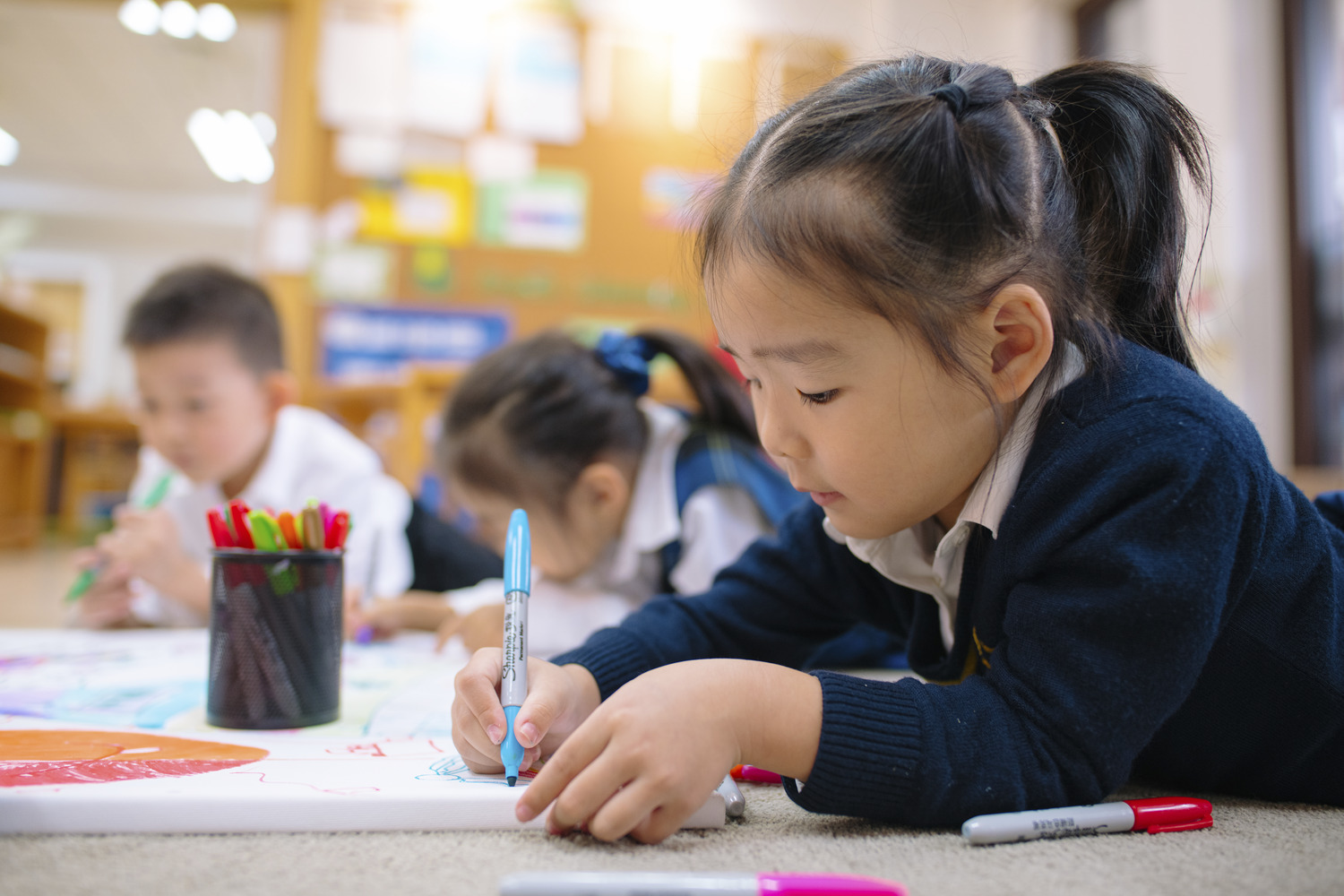
Pupils can also learn basic mathematical principles from everyday items such as licence plates, traffic signs, houses numbers, building structures, songs and stories. Maths is not just about counting and computing. It is also about shapes, patterns, order, size, weight, estimation and problem-solving skills.

Let us take a look at how the Learning and Development Guide for Children 3 to 6 Years Old describes mathematical learning targets for young children in different ages.
Target 1: mathematical cognition
Knowledge of and interest in different kinds of shapes
Recognising that numbers are used regularly in daily life
With guidance, able to recognise that shapes can be used to describe certain objects
With guidance, able to recognise that certain objects can be described with numbers and have an interest in exploring the meaning of numbers
Able to understand the rules of simple arrays and can attempt to create new pattern rules
Able to understand that many problems can be solved using numbers and enjoy solving problems

Target 2: understanding the relationship between number and quantities
Able to identify and describe size, quantity and length
Able to compare the amount of two group of things by counting
Able to count up to five with fingers and correctly quantify objects
Able to describe objects and actions with numbers, e.g. I have four books
Able to identify and describe the thickness and weight of objects
Able to compare the amount of two groups of objects by counting.
Able to understand relationship between numbers, e.g. 5 is 1 more than 4; 2 and 3 make 5
Able to describe the order of objects using numbers
Able to understand the relativity of the quantities
Able to understand the concepts of addition and subtraction in practical situations
Using objects, able to add and subtract quantities less than 10
Able to express simple numerical relationships using simple charts
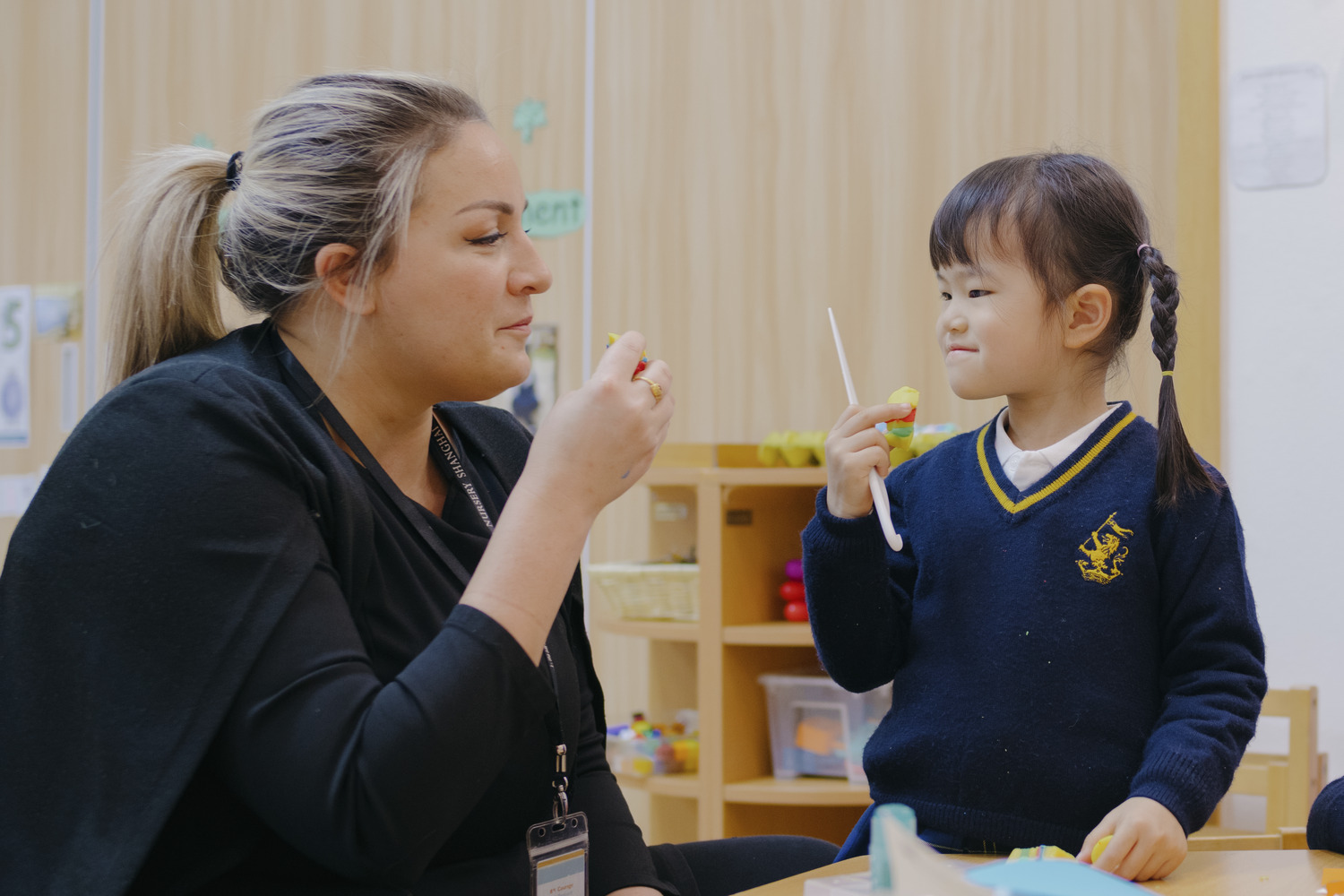
Target 3: understanding shape and space
Able to identify and describe shapes of objects
Able to identify the position of objects and understand the concept of up and down, front and back, in and out
Able to identify the shape and structure of objects and draw or make it
Able to describe the properties of common shapes and classify them into groups
Able to describe position and movement direction of objects, such as up and down, front and back, in and out, between and beside
Able to creatively draw and make shapes using other common shapes
Able to take and put away objects according to oral and simple picture instructions
Able to distinguish left from right

Elaine found a watering can on the balcony. She tried spraying only to discover that it was empty. "There is no water in the watering can," she told her teacher.
The teacher asked: "Where can we find water?" Elaine looked around and found a faucet in the water play area. She filled the watering can and watered the grass in our outdoor play area.
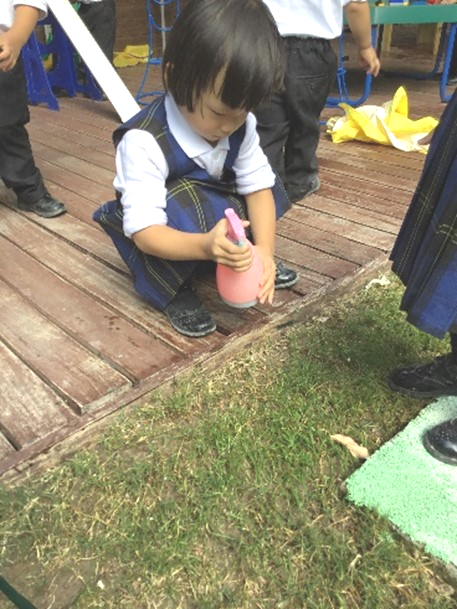

This instance demonstrates Elaine's capacity for observation. She is able to recognise patterns, discover the changes around her and build connections between them. She is also willing to try new things and solve problems under a teachers’ guidance.

During circle time, a teacher and pupils played a game of numbers called 'silent counting'.
After snack time, a pupil named Andana asked some of her classmates if they would like to play the 'silent counting' game again. They agreed, and she began to mimic her teacher, saying, "Please close your eyes. Peeking is not allowed."
She then took toy bears and dropped them one by one in a metal box, which made a clear sound. Her peers then had to count on their fingers how many bears she dropped in the box.
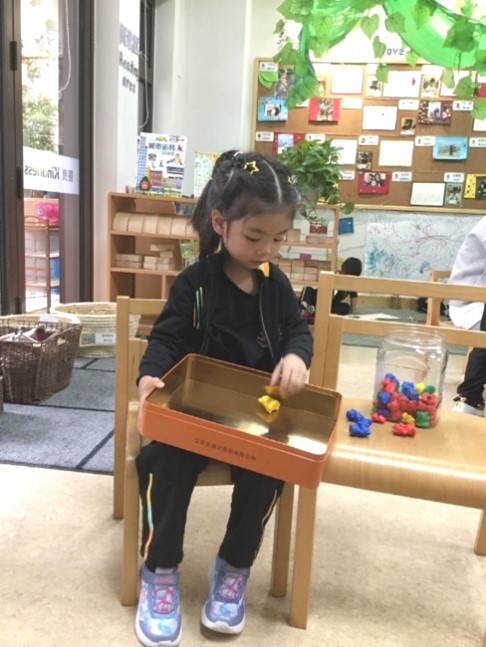
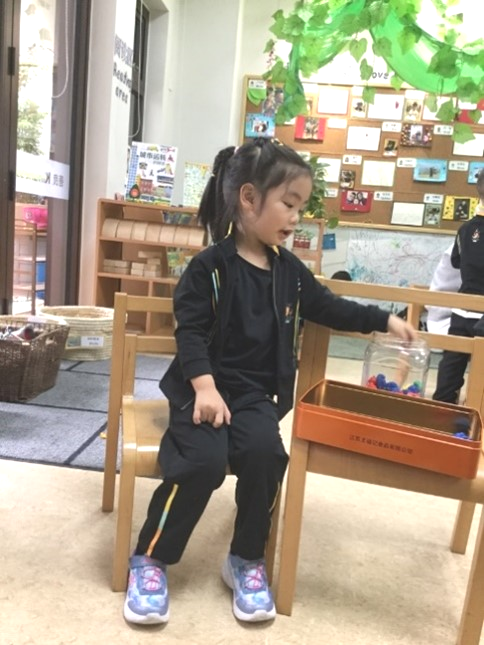
After dropping the sixth toy, Andana said, "Please open your eyes and tell me how many bears are in the box." Some of the children said "six" and some said "five". She said, "Let's count together to get the correct answer."
The children who counted six bears were right. They had the chance to be the 'little teacher' in the next round.


Activities for our EY3 pupils often involve scenarios and rules. Recently, the pupils were assigned the task of investigating the teachers' and classmates' favourite pets. They were asked to complete a survey and instructed on how to record what they heard.
A pupil named Chloe filled her survey form out according to the example provided, but she chose to record her figures in her own way. She tallied the numbers up directly behind each pet icon. Although she had not attended school for several days, Chloe was not shy when she interviewed others.
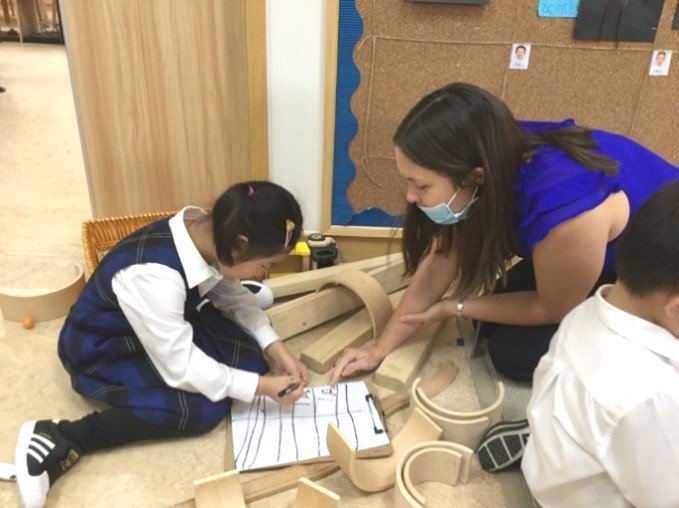
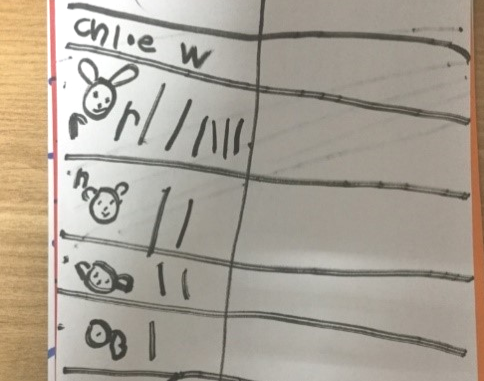
While she interviewed Jennifer, her fellow pupil, Chloe even wrote the English initials of different pets next to each icon with some help from a teacher. This helped her distinguish those pets in the future.

EY4 pupil Quentin found a large set of hole-board toys on the balcony, and, along with some friends, he lined them up on the floor.
Shortly thereafter, he ran to the teacher and told her that there were 29 holes in the floor. The teacher asked him how he arrived at this number and firmly believed that he had calculated it correctly.
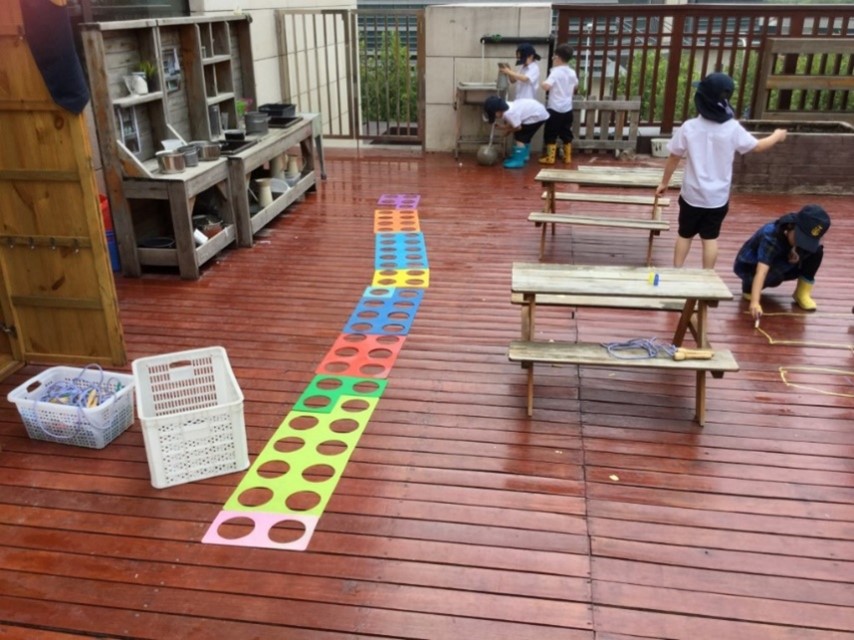
Moments later, the teacher observed him stepping into one hole at a time and counting the number of holes. Finally, he confirmed that the total number of 29 was correct. Here, Quentin exhibited quantitative abilities as well as self-evaluation.
From observation and research to repeated verification, EY4 children achieve complete research loop. This level of growth and discovery never ceases to amaze us.
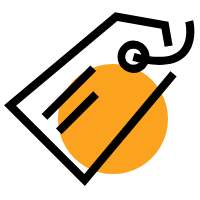
We often observe children playing their favourite games and activities over and over again. This helps them to think and adapt relevant learning experiences. It is why learning through play is such a powerful learning tool.
In the next article, we will talk about more activities that support children's maths learning in a real-life context. Stay tuned.